
A Gallery Tour with Inna Alesina
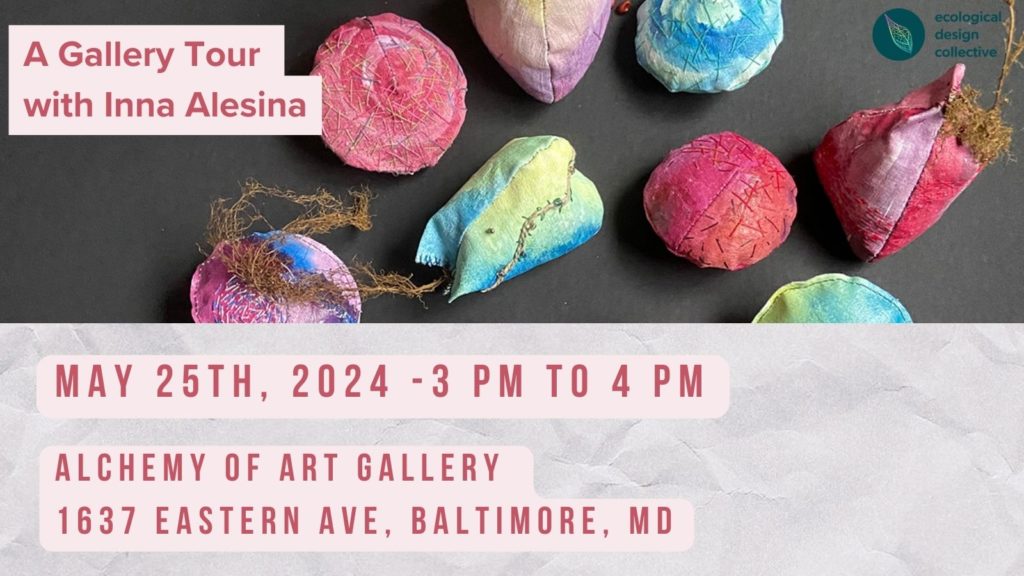
Inna Alesina’s exhibition, The Gifts of Time, Space, & Attention, highlights the issue of invasive plants in Maryland. Alesina’s innovative methods include her foraging efforts and the creation of sculptures ”slow gifts” made with sterilized invasive seeds, watercolor/ invasive exchange, and floor murals.

“Slow Gifts.” In our hypothetical future, one of the most cherished objects is a ‘slow gift’ that reflects deep affection for the land, including the time and effort invested by the giver, or, by proxy, the maker, to create each item. These sculptures have hand-sewn designs and are full of sterilized seeds. Each pouch is filled with thousands of seeds removed that will not be eaten and relocated by birds or animals, preventing further harm.
Location: Alchemy of Art Gallery, Baltimore, MD
ABOUT THE EXHIBITION AND ARTIST:
Inna Alesina is an earth advocate, and also a professor, author, designer, and maker. Her work has merited over a dozen patents, and numerous design awards, and has been highlighted by exhibitions, residencies, and workshops. She was born in Kharkov, Ukraine, where she studied industrial design. A 2018 Red Dot Design Award winner, Alesina works in many disciplines including object design, performance wear, ergonomics, communication design, food systems, and biomaterials. Alesina co-authored a book, Exploring Materials: Creative Designs for Everyday Objects (PAPress, 2010). Alesina is a Professor of Art and Graphic Design at Stevenson University, USA.
According to the US Northeast Climate Adaptation Science Center, climate change will exacerbate the spread of invasive plants northward. Coincidentally, the projected future hotspot of invasive plant abundance is predicted to be in the Mid-Atlantic Region of the US, specifically the Maryland / Pennsylvania border — the artist’s current home. In a world with novel ecosystems (plants, insects, and animals that create a patchwork of food webs after human-made disturbance), new daily rituals and practices can engage people in ways to heal themselves, the land, and its non-human inhabitants.
“The Gifts of Time, Space, and Attention” explores the needs of the land where introduced exotic organisms threaten the biodiversity of the system. In her recent work, Alesina explores introduced invasive plants from many angles, including food, natural dye, speculative design, sculpture, fashion, branding, participatory design, and more.
“The Gifts of Time, Space & Attention” is a compilation of artifacts and interactions focusing on destructive invasive plants and the value of biodiversity in Maryland. Inspired by Robin Wall Kimmerer’s “Braiding Sweetgrass” and her acknowledgment of the power in listening to the brilliance and generosity of nature itself, she has used the branches and berries of the invasives as her medium. The project’s title refers both to her time, space, and attention, but also to the time needed for the environment to grow and adapt, the space to nourish the species that inhabit it, and the attention by exhibit viewers and participants to make better, informed decisions—purchasing plants or removing undesirable ones.
As a forager, wild food cook, artist, educator, designer, and maker, Alesina began her relationship with invasive plants as a volunteer for Gunpowder State Park four years ago. As the eradication of invasive species is difficult and ongoing, her time in the forest led her to experiment with ways of interacting with the plants themselves. The sharp barbs of the barberry inspired her to design a tool to harvest the berries on the plant safely. She began making food, dyes, medicines, and recipe books but became interested in teaching and storytelling using product design and video. She enlisted 18 volunteers to help with invasive berries removal and to test the tool prototypes.
The most symbolically significant artifact designed is the series of pouches, each holding sterilized seeds of three different invasives—Autumn Olive berries (Elaeagnus umbellate), Japanese Barberry (Berberis thunbergii), and Linden viburnum (Viburnum dilatatum). Seeds left over after cooking are washed, dried, and used to stuff small, sculptural, fabric pouches. Each unique pouch prevents the growth of its enclosed seeds with their accompanying destructive encroachment power, thereby creating the gift of time, space, and attention.
In addition to spending time on walks and workdays, Alesina started a daily practice of observing the plants closely and making watercolor studies of invasive plants exploring different techniques. The studies could seem redundant, yet this exercise honed her ability to recognize and identify plants better. Many watercolors on display are samples of those studies.
The most unique part of this exhibition is an invasive buyback/watercolor exchange. The artist’s workstation will be set up in the gallery where during the opening reception and at additional scheduled times, the artist will meet with people who are interested in removing an invasive plant from their property in exchange for a commissioned (free) watercolor. The plant (roots and all) needs to be brought to the gallery and will become part of the exhibit. Commissioned work will be picked up at the end of the show.
Another part of the exhibition is a room with floors covered by painted canvases. One canvas symbolizes the manicured garden with exotic plants that escaped to the local ecosystem. Another painted canvas depicts the entanglement of invasive vines found around Baltimore and the slogan “Free yourself by freeing the trees.” Both paintings encourage people not to buy invasive plants and to remove invasives on their property.

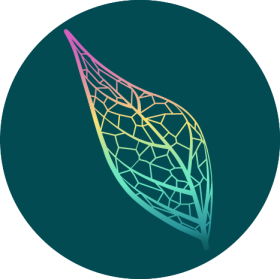
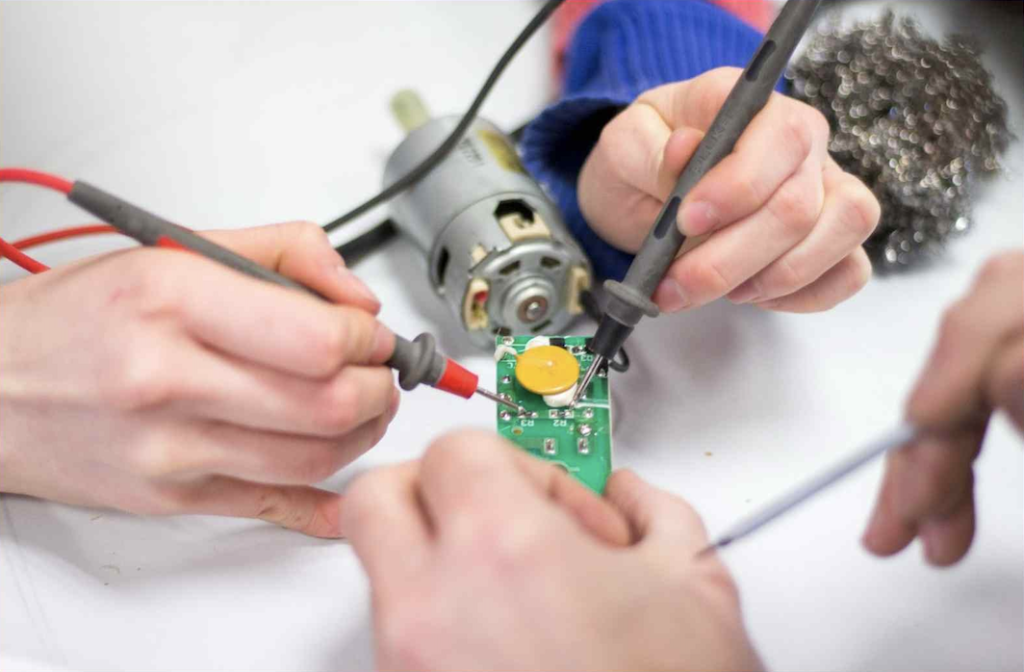
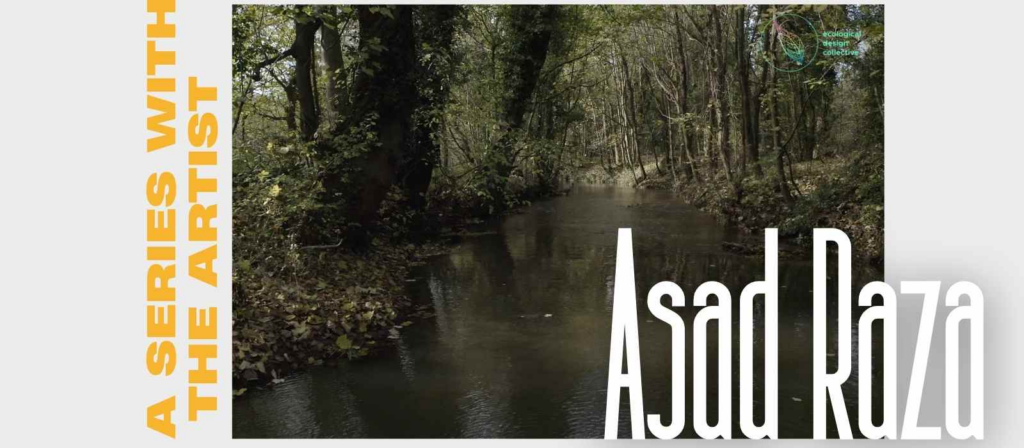

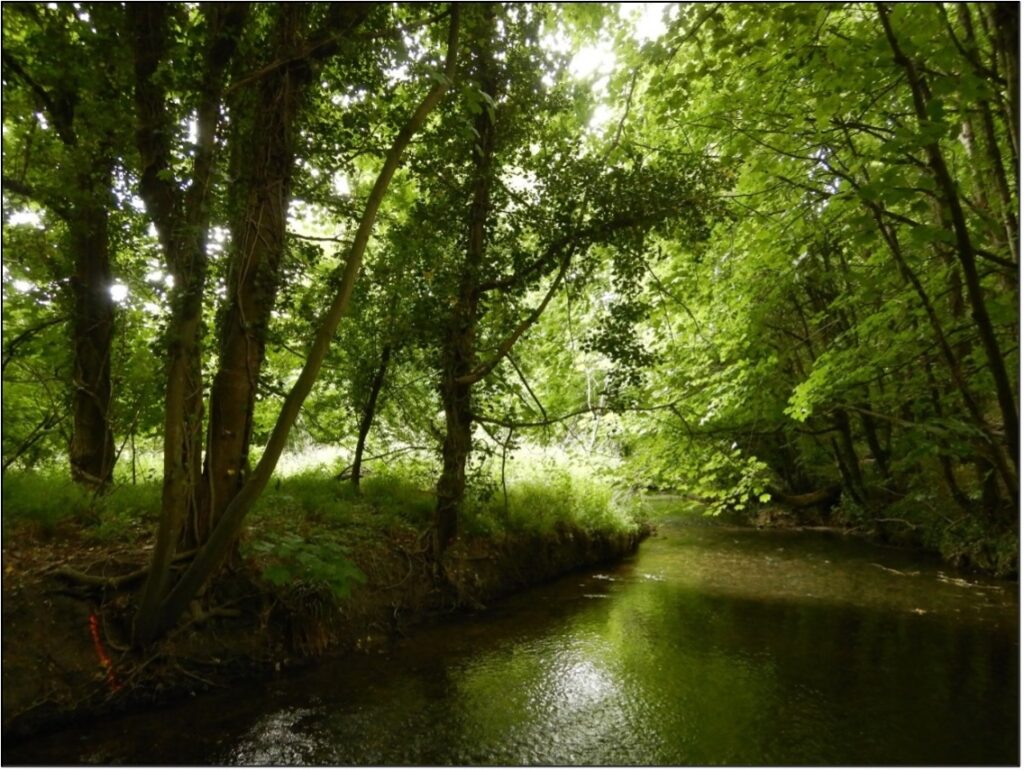

Responses